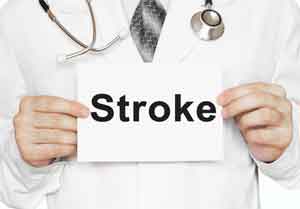- Home
- Editorial
- News
- Practice Guidelines
- Anesthesiology Guidelines
- Cancer Guidelines
- Cardiac Sciences Guidelines
- Critical Care Guidelines
- Dentistry Guidelines
- Dermatology Guidelines
- Diabetes and Endo Guidelines
- Diagnostics Guidelines
- ENT Guidelines
- Featured Practice Guidelines
- Gastroenterology Guidelines
- Geriatrics Guidelines
- Medicine Guidelines
- Nephrology Guidelines
- Neurosciences Guidelines
- Obs and Gynae Guidelines
- Ophthalmology Guidelines
- Orthopaedics Guidelines
- Paediatrics Guidelines
- Psychiatry Guidelines
- Pulmonology Guidelines
- Radiology Guidelines
- Surgery Guidelines
- Urology Guidelines
Warning Sign-Sudden weather changes may increase Stroke incidence

U.S.A: Sudden changes in the weather patterns causing dramatic changes in barometric pressure may increase the incidence of stroke.
The study published in the Journal of Stroke and Cerebrovascular Diseases has reported that intracerebral hemorrhage has been associated with changes in various weather conditions.
Rajeev Kumar Garg and associates conducted a study to examine the collective influence of temperature, barometric pressure, and dew point temperature on the incidence of primary spontaneous intracerebral hemorrhage (sICH).
In a similar study, Medical Dialogues has already reported that a decrease in air temperature might be associated with an increasing number of deaths from stroke, especially in people older than 65 years.
Read Also: Cold weather associated with increased mortality due to stroke
"This is the first study to look at the collective influence of temperature, barometric pressure and dew point temperature on the incidence of spontaneous intracerebral hemorrhage," Garg said.
The study prospectively screened 603 patients who suffered a spontaneous intracerebral hemorrhage (sICH) between January 2013 and December 2016. The mean age was 61 years, 56 percent of patients were men and 86.6 percent of patients were diagnosed with high blood pressure. The actual meteorological conditions 6-hours prior to sICH were compared to those from the randomly generated populations.
The researchers found that the variables that may be associated with a higher risk for sICH are the change in temperature, change in barometric pressure and average barometric pressure.
"The results of the study indicate that the influence of weather on the incidence of spontaneous intracerebral hemorrhages is not a chance event," Garg said. "We did not find any association between patient characteristics and high-risk weather patterns. This suggests that high-risk weather patterns seem to impact patients equally.
Read Also: Higher iron linked to increased stroke risk
According to Garg, the effects of climate change on weather variability must be monitored and if weather variability increases then this may cause an increased risk for spontaneous intracerebral hemorrhage.
The authors concluded that that barometric pressure primarily influences the incidence of intracerebral hemorrhage and the association between temperature and intracerebral hemorrhage is likely confounded by variations in barometric pressure.
For full information log on to https://doi.org/10.1016/j.jstrokecerebrovasdis.2018.10.011

Disclaimer: This site is primarily intended for healthcare professionals. Any content/information on this website does not replace the advice of medical and/or health professionals and should not be construed as medical/diagnostic advice/endorsement or prescription. Use of this site is subject to our terms of use, privacy policy, advertisement policy. © 2020 Minerva Medical Treatment Pvt Ltd